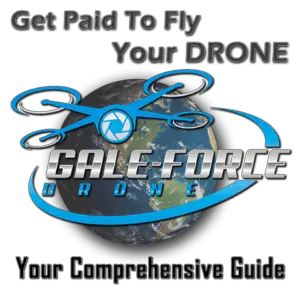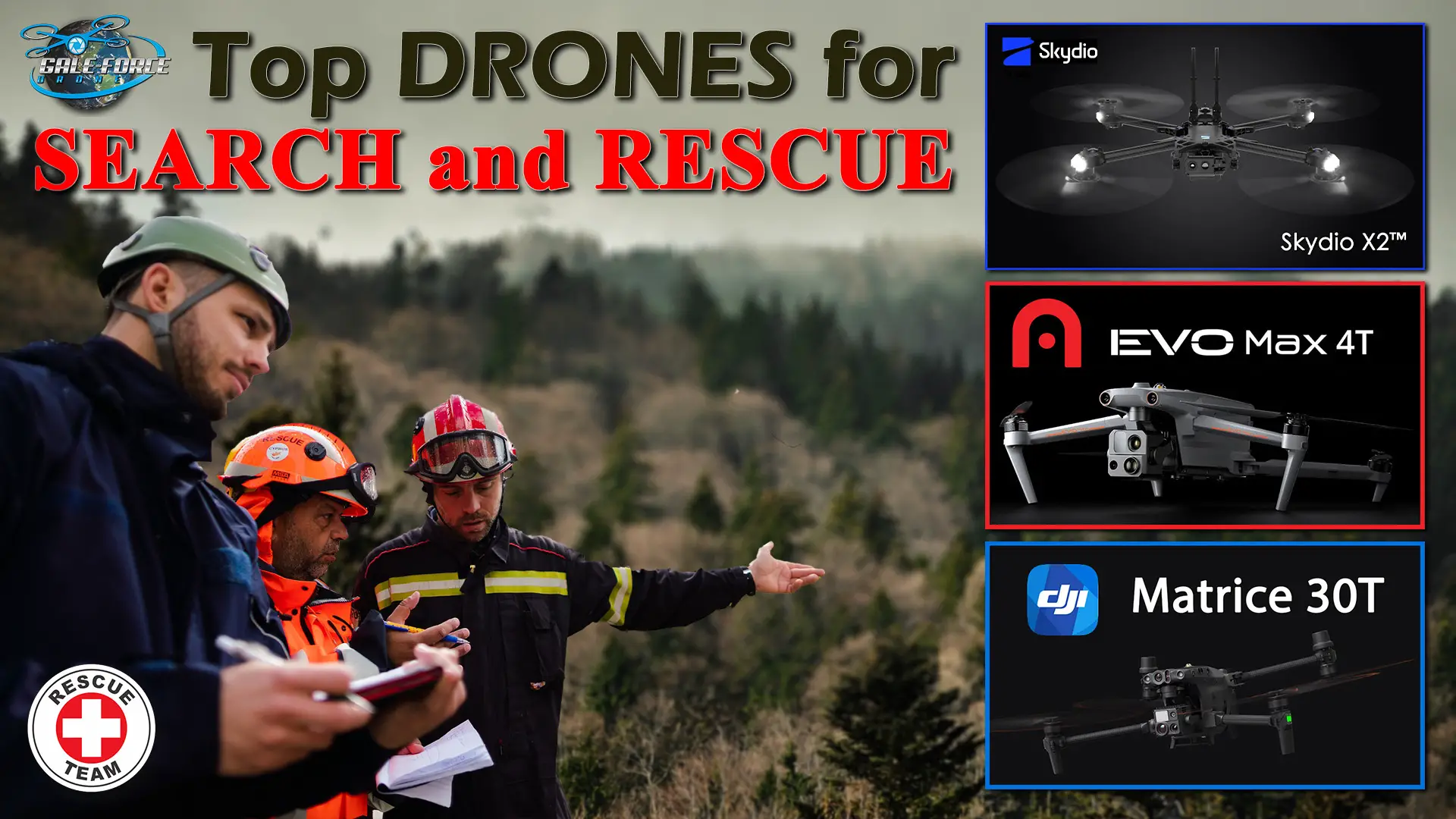
Search and rescue missions are often a race against time, and every minute counts. Drones have become a vital tool for search and rescue teams, providing High-Resolution and Thermal sensors providing real-time data that can make all the difference in locating missing persons or survivors. As a new drone pilot, you may be wondering how you can use this technology to make a difference and potentially save lives. In this article, we'll explore new drones for search and rescue missions, and how they can assist you in your efforts. With these advanced drones, you can make a significant impact in your community and be part of a lifesaving mission.

Skydio X2 and 2+ | Drones for Search and Rescue
The Skydio X2 Color/Thermal and 2+ drones are used in search and rescue operations and designed to provide unmatched aerial situational awareness and enhance search and rescue missions. Skydio has integrated Skydio Autonomy Enterprise, an exceptional AI-powered autonomous flight engine that empowers the drone with 360° obstacle avoidance, autonomous tracking, GPS-denied navigation, and complete workflow automation. With a robust, foldable airframe, GPS-based night flight, strobing lights in visible and IR wavelength, the X2 is an excellent choice for enterprises and first responders. It is designed and assembled in the USA and meets the compliance requirements of the National Defense Authorization Act (NDAA). Below are my 3 top reasons for mentioning this drone:
Powerful Autonomy and Obstacle Avoidance Capabilities
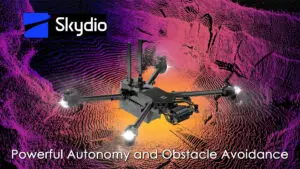
One of the major advantage for search and rescue missions, is the use of computer vision to map environments in real-time, allowing them to avoid obstacles and obstructions even in tight or unfamiliar spaces. This means that the drones can navigate through areas that would be difficult or dangerous for human operators or ground-based robots, providing a better view of the scene and potentially saving lives.
Visual and Thermal Sensors
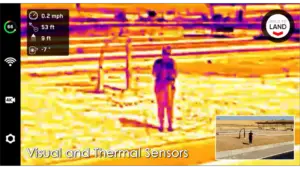
The Skydio X2 Color/Thermal is also equipped with a 12MP, 4K60P HDR Camera with 16X Digital Zoom capabilities. The Color lens with ~46° HFOV, is ideal for situational awareness with longer standoff distances.
It also provides a FLIR® Boson 320 x 256 infrared camera with 8x digital zoom capabilities, empowering operators to locate people who might be hidden from view, such as those lost in dense foliage. Additionally, the drone’s capability to identify hotspots in wildfires or detect heat leaks in buildings makes it an indispensable tool for emergency responders dealing with unpredictable and hazardous environments.
Quick Deployment, Flight Time and Range
Another advantage of the Skydio X2 and 2+ goes from packed to airborne in under 75 seconds, allowing for a rapid response in emergency situations. The drone has a flight time of up to 35 minutes on a single charge, with a flight range of up to 6 km @ (5 GHz), and a flight speed up to 25 mph (40 km/h). This means that it can very quickly cover a very large area in a single flight, making it ideal for search and rescue missions.
Skydio X2 and 2+ goes from packed to airborne in under 75 seconds, allowing for a rapid response in emergency situations. The drone has a flight time of up to 35 minutes on a single charge, with a flight range of up to 6 km @ (5 GHz), and a flight speed up to 25 mph (40 km/h). This means that it can very quickly cover a very large area in a single flight, making it ideal for search and rescue missions.
In my observation, both the Skydio 2+ and the X2 proved to be a game-changer. During a recent search and rescue mission in a densely wooded area, a missing hiker was spotted by the Skydio X2 drone, locating the person using its thermal imaging camera. The drone’s obstacle avoidance capabilities allowed it to navigate through the dense foliage without risking damage, while its autonomous flight engine ensured a stable and safe flight path. The drone’s real-time video feed enabled the ground team to quickly reach the hiker’s location, ultimately leading to a successful rescue. This experience demonstrated the incredible value of Skydio drones in search and rescue operations, and I highly recommend them to anyone looking for a reliable and effective tool in emergency situations.
My Pros and Cons for the Skydio X2 and 2+
Starting with the pros, Skydio drones boast advanced autonomy and obstacle avoidance capabilities, allowing for safe and efficient flight even in challenging environments. The powerful zoom and thermal imaging capabilities of the X2, is incredibly useful in search and rescue missions, making it easier to locate individuals in distress quickly and accurately. Additionally, both drones have a durable and rugged design, making them well-suited to handle the demands of emergency response situations.
I am also impressed with Skydio‘s versatility for other applications, such as such as a wide array of inspection services.
Cons: However, for the X2 Color/Thermal, the high starting price at $10,999.00 might be a little expensive for Drone Startups. Any drone equipped with a thermal sensor is going to have a cost premium attached.The Skydio 2+ is much more affordable, but does not carry a thermal sensor, at least yet.
But for those who do require the highest level of performance and capabilities for search and rescue, Skydio will be my top recommndation.
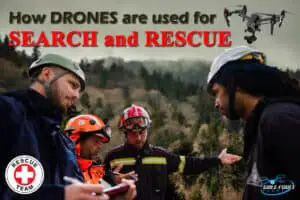 For an In-Depth study on SAR (search and rescue) and “How Drones are used for Search and Rescue” just click this link.
For an In-Depth study on SAR (search and rescue) and “How Drones are used for Search and Rescue” just click this link.

Autel Robotics EVO Max 4T | Drone for Search and Rescue
The Autel Robotics EVO Max 4T drone boasts a suite of advanced features that make it ideal for search and rescue missions. Here are my three main reasons why the EVO Max 4T is an ideal solution for search and rescue:
Powerful Zoom Capabilities
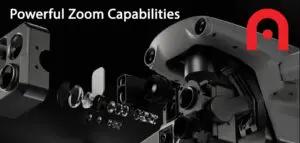 The EVO Max 4T features two high-resolution cameras, including a telephoto option with an 8K 10x optical magnification and up to 160x Max. Hybrid (or digital) zoom via its 50MP Type 1/1.28″ CMOS sensor. This powerful zoom capability enables rescuers to locate missing persons or objects from a distance and assess the situation quickly.
The EVO Max 4T features two high-resolution cameras, including a telephoto option with an 8K 10x optical magnification and up to 160x Max. Hybrid (or digital) zoom via its 50MP Type 1/1.28″ CMOS sensor. This powerful zoom capability enables rescuers to locate missing persons or objects from a distance and assess the situation quickly.
Thermal Imaging
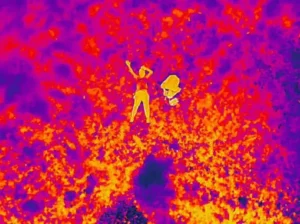 The EVO Max 4T‘s thermal imaging capability is one of its standout features, enabling it to detect and identify heat signatures. This is especially useful in search and rescue missions, where every second is critical to locate missing persons or detect any heat-emitting objects in the surrounding environment. The drone’s infrared camera can detect and highlight thermal signatures in real-time, making it easier to identify heat sources even in low light or rainy situations. The infrared camera with a 640 x 512-pixel resolution and a 16x Digital Zoom allows for a 1.2-kilometer range, detecting heat sources, in both daylight and darkness.
The EVO Max 4T‘s thermal imaging capability is one of its standout features, enabling it to detect and identify heat signatures. This is especially useful in search and rescue missions, where every second is critical to locate missing persons or detect any heat-emitting objects in the surrounding environment. The drone’s infrared camera can detect and highlight thermal signatures in real-time, making it easier to identify heat sources even in low light or rainy situations. The infrared camera with a 640 x 512-pixel resolution and a 16x Digital Zoom allows for a 1.2-kilometer range, detecting heat sources, in both daylight and darkness.
Flight Time and Range
 The EVO Max 4T has a flight time of 42 minutes and a transmission range of just under 20KM or 12.4 miles, according to Autel Robotics technical specs. This extended flight time and range allows the drone to cover a large area in search and rescue operations without having to return to base for recharging or to maintain a connection. Additionally, the drone’s wind resistance of 27 miles per hour, and an IP43 weather resistance rating make it capable of operating in challenging weather conditions.
The EVO Max 4T has a flight time of 42 minutes and a transmission range of just under 20KM or 12.4 miles, according to Autel Robotics technical specs. This extended flight time and range allows the drone to cover a large area in search and rescue operations without having to return to base for recharging or to maintain a connection. Additionally, the drone’s wind resistance of 27 miles per hour, and an IP43 weather resistance rating make it capable of operating in challenging weather conditions.
My Pros and Cons for the EVO Max 4T?
Pros: I am VERY excited about this drone! At a much more affordable price of $8,999, the EVO Max 4T is ideal for search and rescue missions. With its dual-sensor camera system, integrating a 48MP visual camera with a thermal camera at the industry standard 640 x 512 resolution makes it capable of capturing clear and detailed imagery in both daytime and nighttime operations. Add to that its 42 minute flight time and 20km range, SAR teams will have ample time and distance to survey large areas. It’s also versatile with its integrated visual and thermal capabilities for other applications such as powerline and solar farm inspections.
Cons: I really don’t see any technical or functional downsides to this drone, especially at the price point. However, I do get it, the price tag of $8,999 is an expensive investment for an individual just getting into the Drone industry, especially considering more affordable options like the Autel Robotics EVO II Dual640T, which is priced a little lower than the EVO Max 4T at $6,999.
Despite this, the EVO Max 4T is a powerful and reliable asset for professionals in search and rescue operations.
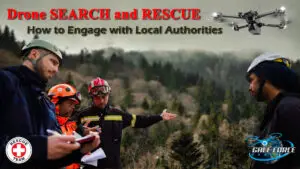 Click in to read my article “Working with Local Authorities for Drone Search and Rescue” to learn how to PROPERLY ENGAGE with local Government Agencies, Emergency Response and First Responders.
Click in to read my article “Working with Local Authorities for Drone Search and Rescue” to learn how to PROPERLY ENGAGE with local Government Agencies, Emergency Response and First Responders.

DJI Matrice 30T | Drone for Search and Rescue
When it comes to search and rescue missions, time is critical, and having the right tools can literally be the difference between life and death. In my experience, the DJI Matrice 30T (or M30T) may just be the best drone for search and rescue. Here are my 3 top reasons for mentioning this drone:
Powerful Zoom Capabilities
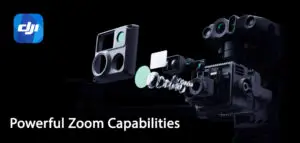
One of the key features of the M30T is its powerful zoom capabilities. The drone is equipped with a 48 megapixel 1/2″ CMOS sensor zoom camera with 5x to 16x optical and 200x digital, a 12 megapixel wide-angle camera, 8k photo 4K/30 fps video resolution. This is incredibly useful in search and rescue missions, as it allows the drone operator to search a large area quickly and efficiently. With the M30T, and a laser rangefinder which can spot someone in distress and give their precise coordinates from up to 1,200 meters away, saving precious time in a critical situation.
Thermal Sensor
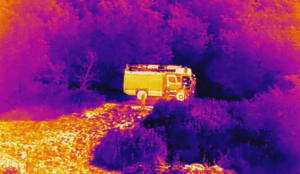
The M30T is also equipped with a 640×512 thermal imaging camera, which can detect heat signatures as low as -4° up to 302° F from a distance. As you can easily imagine, this gives the drone operator the ability to locate people who may be hidden from view, such as those trapped under rubble or lost in dense foliage. The thermal imaging camera can also help identify hotspots in wildfires or detect heat leaks in buildings, making it a versatile tool for a range of emergency situations.
Flight Time and Range
Another advantage of the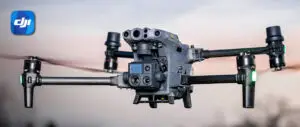 M30T is its long flight time and range. The drone can fly for up to 41 minutes on a single charge, and it has a range of up to 6 miles. This means that it can cover a large area in a single flight, making it ideal for search and rescue missions. The M30T, with it’s IP55 weather rating, can also fly in challenging weather conditions, such as high winds and rain, thanks to its advanced flight control systems.
M30T is its long flight time and range. The drone can fly for up to 41 minutes on a single charge, and it has a range of up to 6 miles. This means that it can cover a large area in a single flight, making it ideal for search and rescue missions. The M30T, with it’s IP55 weather rating, can also fly in challenging weather conditions, such as high winds and rain, thanks to its advanced flight control systems.
In my observation, the DJI M30T drone was proven to be invaluable during a search and rescue mission that was conducted in a dense forest area. The drone was able to cover a large area quickly and efficiently, which would have been impossible for ground teams to do in a comparable amount of time. The real-time video feed from the drone’s FPV camera allowed us to identify the missing person’s location and send the ground team directly to the spot, ultimately leading to a successful rescue. The drone’s stability, range, and advanced features, such as obstacle avoidance, ensured a safe and smooth operation even in challenging conditions. It is truly my opinion that the DJI M30T drone is easily one of the best drones for search and rescue operations, and I would definitely recommend it to any organization or individual looking for the right drone to use in search and rescue.
My Pros and Cons for the M30T
Pros: The M30T boasts an impressive set of features making it an ideal asset for search and rescue missions. Its integrated visual and thermal sensors and powerful zoom capabilities, long flight time and range, enable it to cover large areas quickly, detecting and locating targets in harsh weather conditions and challenging environments.
I am also impressed with the M30T‘s versatility for other applications, such as powerline and solar farm inspections. The drone’s ability to detect and identify temperature anomalies, and capture high-resolution images and videos, makes it ideal for a wide range of industries needing aerial inspections.
Cons: However, the high price tag of $13,999.00 may be a barrier to entry for Drone Startups, especially when compared to smaller platforms like the DJI Mavic 3 Enterprise which can offer similar dual-sensor capabilities at a much lower $3,500 (as of this writing). Additionally, the larger size of the M30T may not be as maneuverable in tight spaces as the smaller platforms.
But for those who do require the highest level of performance and capabilities for search and rescue, the M30T is undoubtedly a top-of-the-line choice.

Closing Thoughts...
There is no doubt that both the DJI Matrice 30T and the Autel Robotics EVO Max 4T are powerful drones for search and rescue missions, with their integrated visual and thermal sensors providing critical support in detecting people in need. The M30T’s longer flight time and range make it an ideal choice for more complex and demanding missions. However, the EVO Max 4T’s more affordable price and similar capabilities make it a more accessible option for those on a budget. And don’t forget that both drones can be used for other applications beyond search and rescue, such as Powerline, Solar Farm and building inspections, which further increase their value. For me, I am leaning more toward the EVO Max 4T as my favorite, just based on value for the price. Ultimately, the choice between the two will depend on individual needs and budget.
